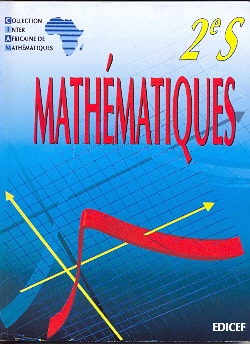|
|
|
|
Author(s): | Jane B. Reece, Lisa A. Urry, Michael L. Cain, Steven A. Wasserman, Peter V. Minorsky, Robert B. Jackson
|
|
Collection: |
|
|
Publisher: | Pearson Studium
|
|
Year: | 2015
|
|
Langue: |
English |
|
Pages: |
1857 pages |
|
Size: | 260.87 MB
|
|
Extension: | PDF |
PDF
|
[tab]
[content title="Summary"] **Produktinformation**
Weltweit bekannt für seine perfekte Balance zwischen Verständlichkeit und wissenschaftlicher Präzision, präsentiert sich die „Bibel der Biologen“ nun in einer vollständig überarbeiteten und in einem modernen Design neu gestalteten Ausgabe. Unter der Leitung von Prof. Dr. Jürgen J. Heinisch und Prof. Dr. Achim Paululat hat ein 26-köpfiges, renommiertes Team von Dozentinnen und Dozenten, vorwiegend an der Universität Osnabrück, das meistverkaufte Standardwerk der Biologie umfassend aktualisiert und optimal auf das Studium in Deutschland, Österreich und der Schweiz abgestimmt.
Das Buch wird durch eine ausgeklügelte Online-Lernumgebung ergänzt. Über einen im Buch enthaltenen Code erhalten Sie Zugang zu zahlreichen Videos, Animationen, Experimenten und Übungsaufgaben sowie einer digitalen Version des Buches – ideal zum Lernen und Lesen, wo immer Sie sich gerade aufhalten.
**Beschreibung**
Das Buch ist klar strukturiert und jedes Kapitel ist um eine kleine Zahl von Schlüsselkonzepten herum aufgebaut, die den Kontext für das Detailwissen schaffen und dabei helfen, das „große Ganze“ im Blick zu behalten. Der modulare Aufbau ermöglicht es, die Kapitel in beliebiger Reihenfolge zu lesen, ohne dass der Zusammenhang verloren geht. Wichtige, mehrere Teilbereiche umfassende Themen werden gesondert hervorgehoben und bieten eine anschauliche Darstellung zentraler Beziehungen. Eine farblich hervorgehobene Randleiste erleichtert das schnelle Auffinden der einzelnen Kapitel.
Das Ziel des Buches ist nicht nur die Vermittlung von Faktenwissen, sondern auch die Darstellung, wie wissenschaftliche Fragestellungen entstehen und Phänomene untersucht werden. Exkurse zu „Arbeitstechniken“ erläutern beispielhaft Experimente und Felduntersuchungen, während „Wissenschaftliche Übungen“ den Lesern Schritt für Schritt wissenschaftliche Fertigkeiten näherbringen – wie zum Beispiel das Auswerten von Daten oder die praktische Durchführung von Experimenten.
Zahlreiche Wiederholungsfragen und Übungsaufgaben mit Lösungen sowie einzigartiges Bildmaterial, präzise Grafiken und ein durchdachtes, modernes Layout machen dieses Werk zu einem unverzichtbaren Klassiker im Biologiestudium. Hinzu kommt die umfassende Online-Lernumgebung, die zusätzliches Lernmaterial und interaktive Inhalte bietet – eine perfekte Ergänzung für den erfolgreichen Studienverlauf. [/content]
[content title="Content"] [/content]
[content title="Author(s)"] [/content]
[/tab]
[facebook src="bibliosciencesorg"/]
Key-Words: Télécharger Campbell Biologie EBOOK PDF EPUB DJVU . Download Campbell Biologie EBOOK PDF EPUB DJVU .

















